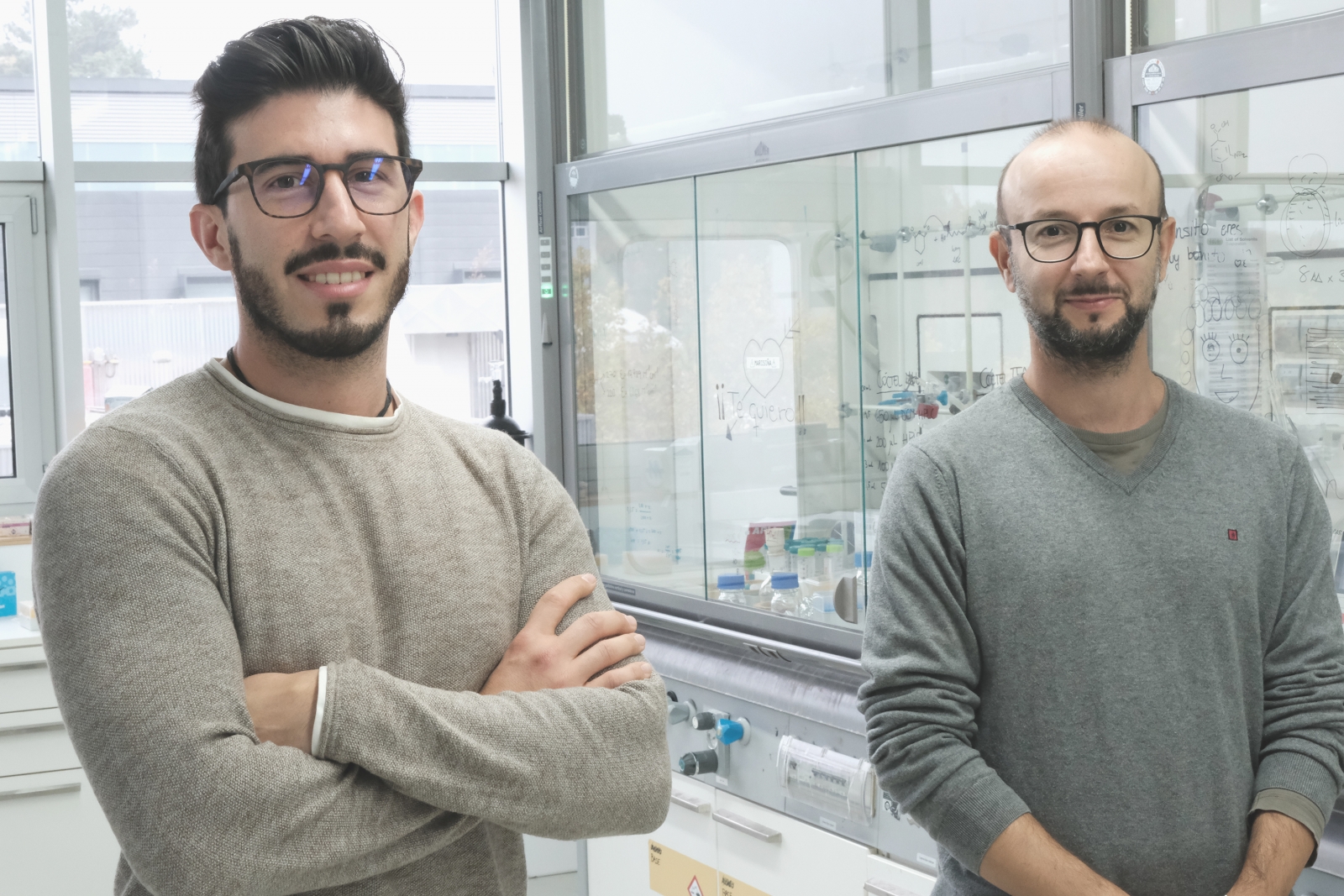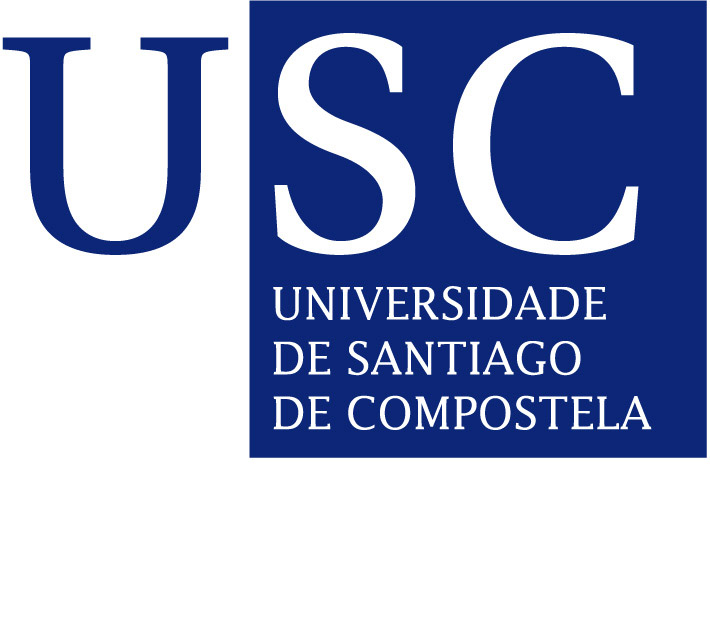-
CiQUS researchers show that a self-assembled fibrillar system generated from very simple molecules leads to functional responses in protocells.
-
The study suggests that very simple molecules may have been responsible in primitive cells for carrying out functions performed today by more complex molecules.
-
These results contribute to our understanding of the molecular evolution of life, and have just been published in Nature Communications.

Co-authors of the study, Dr. Ignacio Insua and Prof. Javier Montenegro at the lab.

The fibrillar network of aggregated peptides mimics complex responses.
The cytoskeleton constitutes a network of filaments that gives shape and resistance to cells, representing a major element in key functions as cell motility and division. Now, researchers from the Centro Singular de Investigación en Química Biolóxica e Materiais Moleculares (CiQUS) at Universidade de Santiago de Compostela have developed a self-assembled microfibrillar network inside small water droplets, which have been used as elementary models of primitive cells or protocells. This fibrillar system is generated by dormant precursors that react with each other, resulting in the synthetic reproduction of a primitive cytoskeleton with cell-mimicking functions.
“We have designed a system based on peptides (small proteins) capable of creating fibres, in a process controlled by the reaction between this peptide and another small stimulating molecule” said Prof. Javier Montenegro on the formation of this synthetic grid developed by his research group. The resulting fibrillar network “simply mimics the structure of a possible cytoskeleton inside these water droplets or protocells and can induce complex responses, such as the uptake of nutrients from the environment, membrane fusion and the communication and exchange of molecules between individual entities” explains Dr. Ignacio Insua, co-author of the study and member of the research team.
Researchers have succeeded in demonstrating experimentally for the first time that the assembly of a fibrillar network from very simple molecules could have provided an evolutionary advantage for carrying out complex tasks, such as the uptake of external nutrients by individual aqueous entities or protocells. Thus, the results of the study suggest a possible molecular basis in the formation and mechanism of a primitive fibrillar network, which could have allowed simple molecules to carry out some of the vital functions performed today by much more complex molecular systems.
The study has just been published in the renowned journal Nature Communications and has been entirely developed at CiQUS by an international team supervised by Prof. Montenegro, including lead authors Ignacio Insua and Richard Booth, together with researchers Sahnawaz Ahmed and Alicia Rioboo.
Reference
Richard Booth, Ignacio Insua, Sahnawaz Ahmed, Alicia Rioboo and Javier Montenegro*. Supramolecular Fibrillation of Peptide Amphiphiles Induces Environmental Responses in Aqueous Droplets. Nat. Commun. 2021, DOI: 10.1038/s41467-021-26681-2


